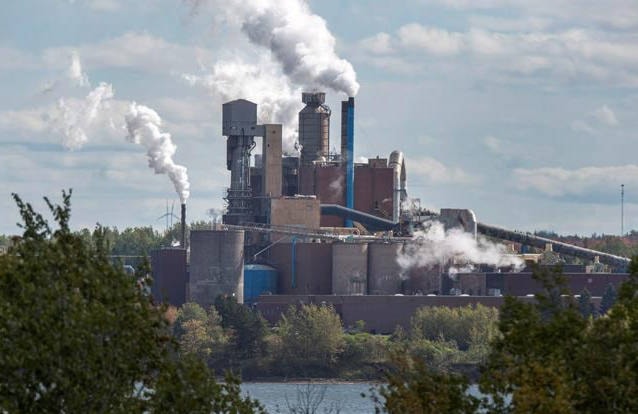The federal government’s carbon pricing plan could eliminate up to 90 million tonnes of carbon dioxide by 2022 — but whether that actually happens still depends on what kind of carbon pricing schemes provinces put in place, says a new analysis from Environment and Climate Change Canada.
The report, made public Monday, is the latest government attempt to sell the politically divisive Liberal carbon pricing policy the Opposition Conservatives are hoping will be a key ballot question during the 2019 federal election.
“Our analysis confirms that carbon pricing works, that it significantly reduces pollution,” said Environment Minister Catherine McKenna.
The analysis used models of what carbon pricing does to human behaviour and economic growth to determine that by 2022, when the federally mandated carbon price will be at least $50 per tonne, it will eliminate 80 million to 90 million tonnes of greenhouse gas emissions in Canada.
“That’s like taking every car off the road in Canada or closing 20 to 23 coal plants in a year,” McKenna said.
Even with carbon pricing and other measures, including eliminating coal-fired power plants, cutting methane emissions from the oil industry and making cleaner fuels, Canada will still be 90 million tonnes shy of its international emissions targets set in 2015 under the Paris agreement.
The 13-page analysis also says a carbon price will cut about $2 billion from the Canadian economy, or 0.1 per cent of GDP, but that GDP growth will be about 1.8 per cent each year until 2022 with or without a carbon price.
The GDP impact also doesn’t take into account the prospect of additional growth that could result from clean technology investments spurred on by a higher price on carbon.
Last week the parliamentary budget office estimated the GDP impact would be closer to $10 billion, although it didn’t account for what governments might do with the revenues, noting cuts to corporate and personal income taxes could lower that estimate.
Provinces can currently decide how to use the revenues from a carbon price if they implement the system on their own. B.C. cut income taxes to offset the carbon tax cost to individuals, while Alberta cut rebate cheques to low- and middle-income families.
Ottawa will decide how the revenues are spent if it imposes a carbon price on a jurisdiction, and has committed to returning all the proceeds, likely in the form of rebates to families and businesses.
The report notes the numbers are only preliminary because the actual impact will depend on the kind of carbon pricing systems provinces put in place, including what is done with the revenues.
Most economists and environmental experts say carbon pricing will only work if the price rises significantly beyond $50. In British Columbia, emissions initially went down after a carbon tax was introduced there in 2008, but started creeping upwards again after the tax stopped rising in 2012.
McKenna says the four provinces that have a carbon price already are also the four provinces with the strongest economies in Canada.
The report marks the first time Ottawa has provided any real estimate of the impact of its $50-per-tonne carbon price, despite the fact the policy to enforce a national carbon price was unveiled 18 months ago. The Conservatives have pilloried the government for that silence ever since.
The Pan Canadian Framework on Clean Growth and Climate Change did identify the emissions cuts that could come from other government measures, such as eliminating coal as a source of electricity (16 million tonnes by 2030), regulating limits on methane emitted by the fossil fuel industry (21 million tonnes by 2025) and a clean fuels standard (30 million tonnes by 2030).
However, it specifically noted the impact of carbon pricing could not be separated from other measures.
Carbon pricing is a politically divisive policy in Canada, with most Conservatives saying it would raise the price of almost everything without actually cutting emissions.
Conservative Leader Andrew Scheer said over the weekend his party will find a way to meet the Paris commitment without a carbon price, and has promised to rescind the carbon price if elected prime minister next year.
The Conservatives voted in favour of Canada’s commitment to the Paris agreement last year, but Scheer says his party will have a credible plan to do that without a new tax.
Saskatchewan Premier Scott Moe last week asked the Saskatchewan Court of Appeal to rule on whether imposing a carbon tax on his province would be unconstitutional.
The conservative leaders in both Alberta and Ontario back that move; UCP Leader Jason Kenney is trying to get standing in the case. Kenney and Ontario Conservative Leader Doug Ford have both said they will repeal carbon pricing systems in their provinces if they win the next election.
Canada, meanwhile, is about to pass a new budget bill that would allow it to impose a carbon price in any jurisdiction that doesn’t have its own.
Mia Rabson, The Canadian Press
